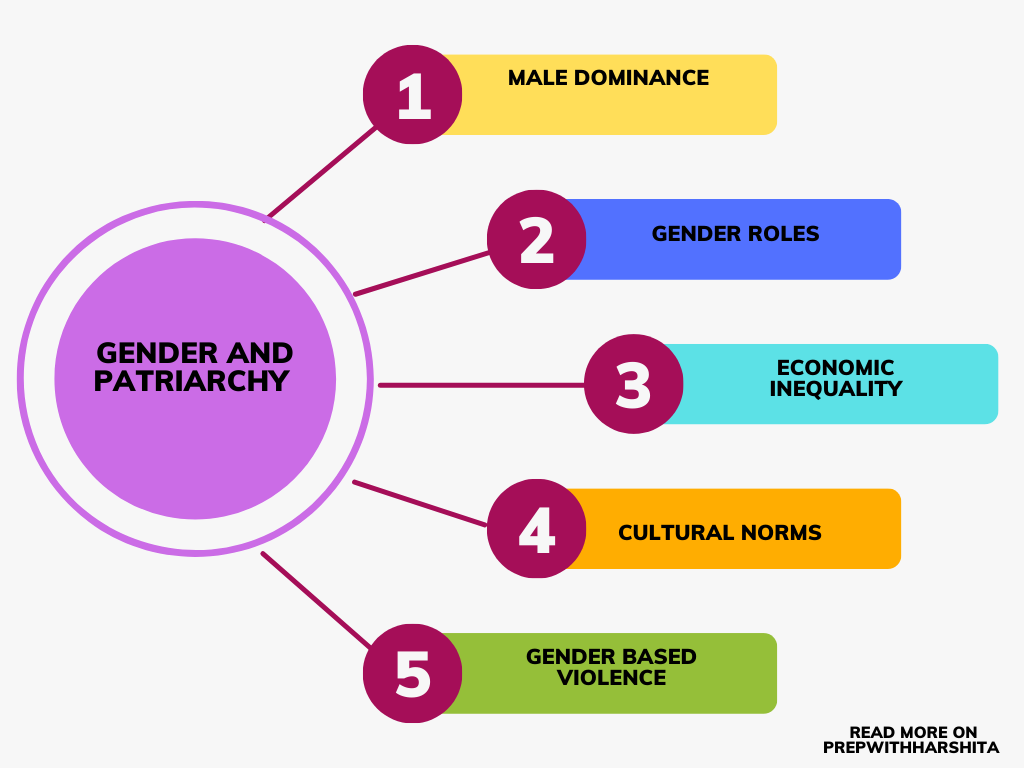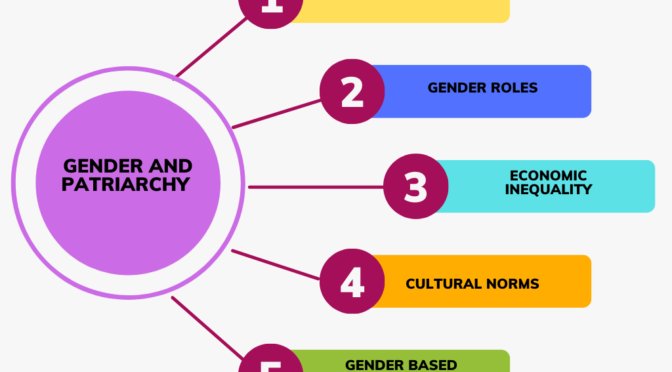Gender refers to the socially constructed roles, behaviors, and expectations that are associated with being male or female in a particular society or culture. It encompasses both biological sex differences and the cultural and social meanings that are attached to those differences.
Patriarchy refers to a social system in which men hold the primary power and authority in society, and women are subordinate to men. It is rooted in gender-based power imbalances, and it manifests in a wide range of social, cultural, and political institutions and practices.
Patriarchy has been a dominant social system in many societies throughout history. It continues to shape gender relations in many parts of the world. It can limit women’s opportunities and freedoms, reinforce gender stereotypes and biases, and perpetuate discrimination and violence against women.
Also Read : Difference between Contextual and Textual Knowledge
Here are some common features of gender and patriarchy:
Gender:
- Socially Constructed: Gender is a social construct, meaning that it is created and maintained by society rather than being purely biological.
- Binary Categories: Most societies have a binary understanding of gender, dividing people into two categories: male and female.
- Cultural Norms: Gender is shaped by cultural norms and expectations, which can vary across different societies and historical periods.
- Fluidity: While gender is often thought of as fixed and unchanging, some individuals experience their gender as fluid, meaning that it can shift and change over time.
- Intersectionality: Gender intersects with other social identities, such as race, class, and sexuality, to shape experiences of privilege and oppression.
Patriarchy:
- Male Dominance: Patriarchy is characterized by the dominance of men in positions of power and authority.
- Gender-Based Violence: Patriarchy can result in gender-based violence, including sexual harassment, assault, and domestic violence.
- Gender Roles: Patriarchy reinforces traditional gender roles, which assign men as breadwinners and women as caretakers.
- Economic Inequality: Patriarchy can result in economic inequality, as women are often paid less than men for the same work . They also have less economic opportunities.
- Cultural Norms: Patriarchy is reinforced by cultural norms and beliefs that uphold male superiority and female subordination.



เว็บปั้มไลค์
ปั้มติดตาม